Contractors connected bathroom fan to existing dryer duct. Is this ok?
Daniel Badra
last year
Featured Answer
Comments (10)
Daniel Badra
last yearRelated Discussions
Master Bathroom Updated - X-Post from Decorating
Comments (25)bullielove and motherof3inct - Yes, the Linen Cabinet was also built custom and to match the vanity - drawers same height and same wood/finish. The original Linen Closet had an 18" bi-fold door, which really only opened about 15", with wire shelving inside. The door was standard 80" height. We opened the width to 24" and the height to 96" for this cabinet. It is free-standing, though anchored, and the frame is scribed to fit as if built-in. Appreciate your kind remarks....See MoreBathroom Exhaust Fan -- Broan L200?
Comments (12)mike -- Don't know that we will need a timer. It's just DH and I -- retired -- can remember to turn it off, I think. BTW, how long should it run after a bath or shower? energy rater -- The specs say the backdraft damper is within the 8" duct connection portion of the fan, not whether it faces in or out. I need to ask that they face it away from the fan itself, right? Or are you saying the damper should be not at the fan, but at the soffit? The bath is on the NW corner of the house. Air and moisture will go UP through the bathroom ceiling into the fan, ACROSS about ten feet of attic floor, then out a West soffit. Is it at the soffit that you want metal-flex flaps? Does moisture acclumlate there? Drip outside the exterior wall? (Yeah, where DOES the water go?) I see round aluminum-looking flex-ducting in the attic. Is that what I should expect to see on this install -- not hard metal ducting like a forced air furnace? Is this capacity appropriate? I want to eliminate excess moisture, but don't want to be taking baths or showers in a wind tunnel! (It is meant to run *while* one bathes and a short while afterwards, right?) Is a sone rating of 1.7 good? Is Broan a good brand? This installer is also going to correct three other, smaller bathroom exhaust fan ducts that now empty INTO the attic instead of outdoors. Price is $900 all in for Broan unit and all work. He says it will take about four hours. We are north of Chicago in a high-*address tax*-suburb, as my DH terms it. Thanks so much for your time and trouble. Much appreciated. I'm probably overly concerned, but we keep finding faults (like these fan exhausts) in a house that passed city inspection when it was built only 10 years ago. I'm sure it was not code to vent into an attic!...See MoreLong Duct Run for Vented Dryer vs. Condenser Dryer
Comments (20)gordonr, If there's nothing else I've learned during the course of my renovations, I've learned that everything ends up being more complicated than you expect. Once you open up the ceiling or the wall, there always seems to be something in the way of what you want to do. A floor joist where the tub drain needed to be, pipes where I wanted recessed lights to go, and now the recessed light over the tub is where it would make sense to run the duct. I can hardly wait to get to the kitchen renovation! I spoke with a rep in Miele's technical service group yesterday. Initially he was telling me he thought what I wanted to do entailed too long a stretch of duct - that it would reduce the performance of the dryer. I told him I expected that it would not be optimal performance, but what I was trying to determine was whether it would reduce it to the extent that a condenser dryer would have the same performance. He didn't seem to understand what I was getting at, so I gave an example: If the vented model has 15% better performance than the condenser model and the venting I'm doing reduces performance by 15%, then the condenser model would be generally equivalent, but if the vented dryer's performance is 50% greater, the same 15% reduction in performance would still mean the vented dryer was a better choice. I asked if he could give me any information about how much better the vented dryer's performance was than the condenser model and how much the venting I was considering would reduce the vented dryer's performance. At that point, he said he wanted to talk with one of the senior technical reps and put me on hold. When he came back, he told me that the dryer was rated for up to 60 feet (which I already knew) and that I should be fine with what I was planning on doing. He also told me that the sr. rep had indicated that having a condenser dryer in a closet could be problematic because it puts off a lot more heat than a vented dryer - you'd need a lot more air circulation into the closet with a condenser dryer. The closet I'll be putting the w/d into is 68" wide by 29" deep, so the extra heat and air circulation need may not have been as much of an issue for me as it might be for others with a more confined space. One learning that I took away from this: if you start to get the sense that the technical or customer service person you're talking to may not be as knowledgeable as you'd like, ask to talk with a senior rep. Like anywhere else, initial phone calls will be answered by more junior staff who will route the more complicated issues to more experienced staff. I've decided to go with a vented dryer, and now just need to decide between the Miele and the Asko. I'll let everyone know which one I end up with. Jan...See MoreHow to best use a long, undersized duct for the dryer
Comments (6)this was NOT elegant... and was 20 years ago... in the north east in a house with a basement laundry, with a finished "rec" room that you walked through to get the "laundry/furnace/hot water heater/sump pump area which was about 1/3 of the basement.... My father vented my dryer with rigid metal piping into a 5 gallon bucket that he had cut 4 holes about 3" in diameter in the sides of near the top, and he had then cut a hole large enough for the vent pipe to fit into... I had one elbow off the dryer, a straight run and then another elbow into the bucket... I made sure there was water almost to the holes in the sides... when the dryer ran, lint would collect in the water, and yes water did evaporate into the air... since the basement was "damp" to begin with (I believe from the sump pump hole) I had a dehumidifier down there in the "finished" part... with a hose attached that ran to the sump pump hole.... Not sure how your "lowest level" with the cement wall is finished or viewable... but.. this was a cheap alternative and it did work... btw... yes the bucket got ugly... I would take the lid off and use a metal kitchen soup type strainer to "fish" out the lint and dump it in the trash when I was done with my laundry... and before I started I would make sure the water level was alright... like I said at the start... this was certainly NOT elegant... but very functional......See MoreCharles Ross Homes
last yearlast modified: last yearDaniel Badra
last yearCharles Ross Homes
last yearDaniel Badra
last year3onthetree
last yearci_lantro
last year
Related Stories
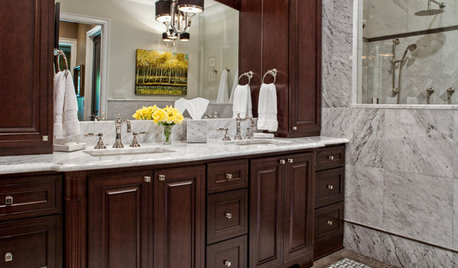
REMODELING GUIDESBathroom Workbook: How Much Does a Bathroom Remodel Cost?
Learn what features to expect for $3,000 to $100,000-plus, to help you plan your bathroom remodel
Full Story
REMODELING GUIDESContractor Tips: What Your Contractor Really Means
Translate your contractor's lingo to get the communication on your home project right
Full Story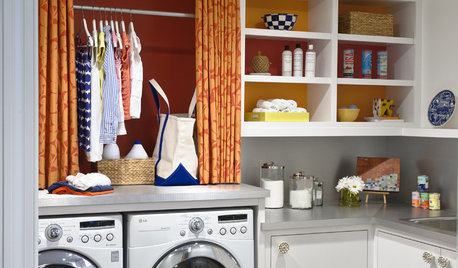
REMODELING GUIDESContractor Tips: Advice for Laundry Room Design
Thinking ahead when installing or moving a washer and dryer can prevent frustration and damage down the road
Full Story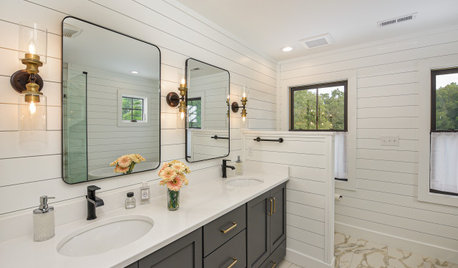
BATHROOM WORKBOOKHow to Remodel a Bathroom
Create a vision, make a budget, choose your style and materials, hire the right pros and get the project done
Full Story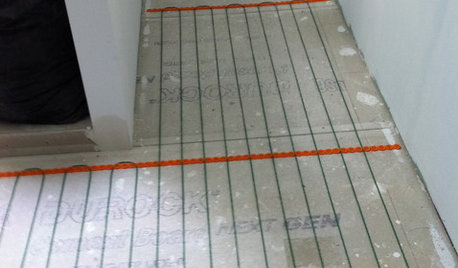
BATHROOM DESIGNWarm Up Your Bathroom With Heated Floors
If your bathroom floor is leaving you cold, try warming up to an electric heating system
Full Story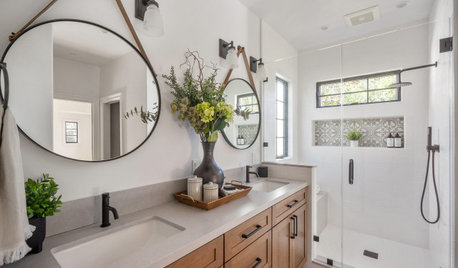
BATHROOM DESIGN5 Common Bathroom Design Mistakes to Avoid
Get your bath right for the long haul by dodging these blunders in toilet placement, shower type and more
Full Story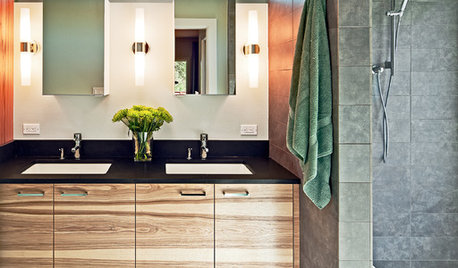
BATHROOM DESIGNA Designer Shares Her Master-Bathroom Wish List
She's planning her own renovation and daydreaming about what to include. What amenities are must-haves in your remodel or new build?
Full Story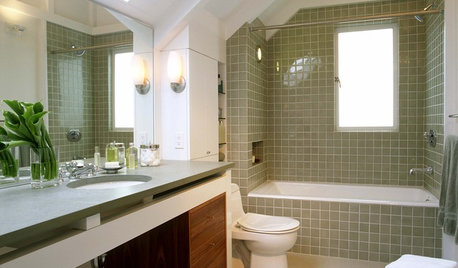
BATHROOM DESIGN12 Things to Consider for Your Bathroom Remodel
Maybe a tub doesn’t float your boat, but having no threshold is a no-brainer. These points to ponder will help you plan
Full Story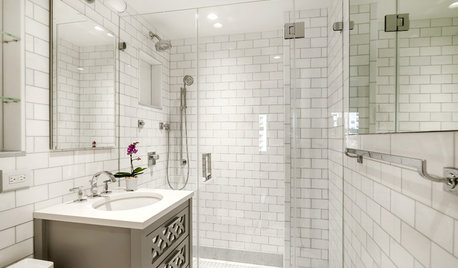
BATHROOM WORKBOOK5 Ways With a 5-by-8-Foot Bathroom
Look to these bathroom makeovers to learn about budgets, special features, splurges, bargains and more
Full Story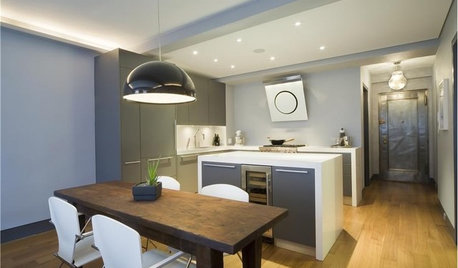
KITCHEN DESIGNHow to Choose the Right Hood Fan for Your Kitchen
Keep your kitchen clean and your home's air fresh by understanding all the options for ventilating via a hood fan
Full Story



Charles Ross Homes